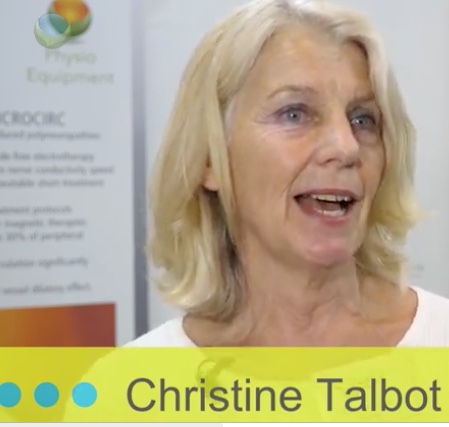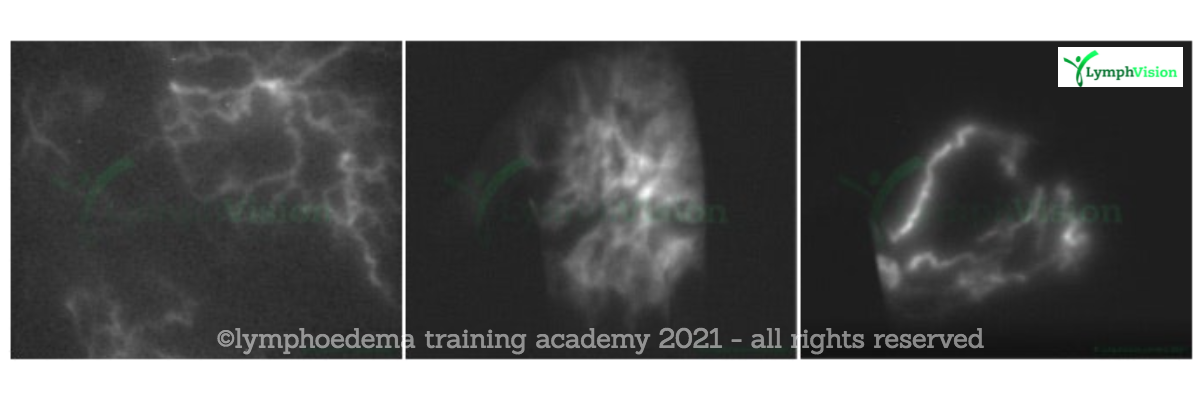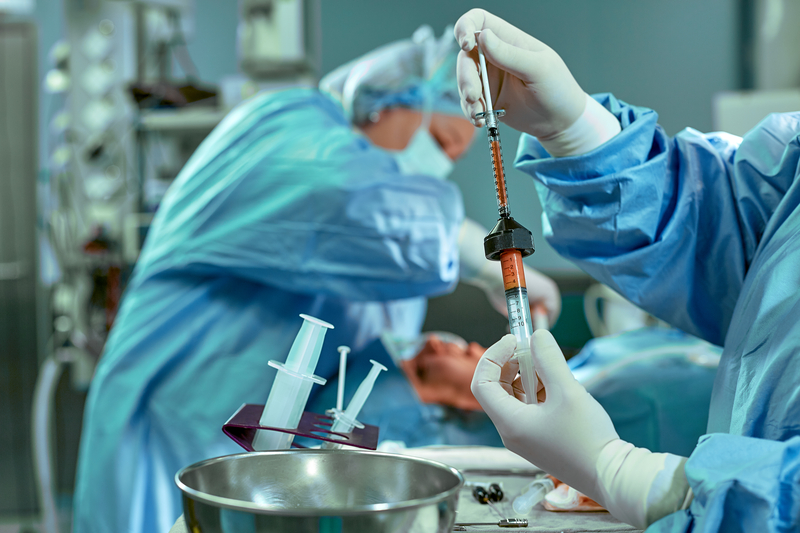What Has Changed In 20 Years Of Lymphoedema Management:
PhysioPod asked Christine Talbot SRN, Lymphoedema and Bowen Practitioner for her opinion..

"The internet has provided the greatest advance in highlighting and bringing to public awareness the conditions of Lymphoedema, developing international opportunities through networking for support, information and a sharing of experiences and treatment options.
Sixteen years ago, when I first trained as a Lymphoedema Practitioner, Lymphoedema was relatively obscure and unknown but still prevalent in all its presentations, leaving many sufferers alone and isolated, shameful and guilt-ridden with blame heaped upon them through ignorance and disregard. For those it was, and still is, a life sentence.
But little by little as awareness grows and word spreads, questions are asked and answers sought, this drip-drip of information has created a community of sufferers with similarities, joining forces and becoming powerful advocates in their own right for their own conditions. They fund raise, they organise workshops, conferences, they attend the bigger professional conferences, giving a far greater insight into their world and the world of Lymphoedema from the other side of the coin.
Clinically, in certain aspects of basic care and requirement, situations have improved, in particular hosiery is available on prescription, skin and wound care products are readily available on prescription. The styles and styling of hosiery has improved offering colour choices from many companies. The development of the wraps makes application and self-care more manageable and user-friendly.
Exercise used to be mentioned with extreme caution but is now actively encouraged to strengthen the muscular pump against the vessels to aid lymph propulsion.
ADJUNCTIVE THERAPEUTIC APPROACHES

Several effective therapeutic modalities have made their way into Lymphoedema treatment protocols over recent years:
- The vibrating effect of power plates assists the movement of lymph, the Revitive [1] machine strengthens muscles and venous blood flow in the lower legs and feet (NB not to be used in arterial disease).
- The Lymph Assist (12 chamber sequential pump) has evolved further since its introduction via Jane Wigg in 2005 [2] now with the advent of lymphatic mapping, this has aided new research towards the development of the LymphFlow Advance [3] available from Haddenham Healthcare.
- The Lymphatouch, an electronic suction cup is a myofascial decompression therapy device available from Physiquipe.
- Low-level laser light therapy [4] works at a cellular level to aid healing and repair available from PhysioEquipment
- High-powered pulsed electromagnetic field therapy (PEMF) via the Magcell from PhysioEquipment, I have found is most effective when placed over engorged lymph nodes and other areas of congestion causing pain.

But, the greatest treatment asset to patients and practitioners alike, is Deep Oscillation therapy [5], designed and manufactured in Germany by Physiomed and supplied through PhysioPod to the UK and Ireland. A versatile machine for practitioner and self-use, significantly enhancing treatment outcomes and success in the overall reduction of lymphatic engorgement, pain, immobility and thus lessening the risk of infection. The positive effects of this machine improve the long-term outcome aiding belief in the visual change and the restoring of patient control and moral.
August 2021: In this special research report, Dr. Miguel Amore and María Del Rosario Pineda proved lymph is driven (with ICG) by Deep Oscillation equipment (oscillator applicator head moving gently over the surface of the skin).
ICG Lymphatic Mapping
 Mapping of lymphatic vessels [6-7] to ascertain directional flow is relatively new, available in a few specialist centres, however it is expensive and has to be self-funded. ICG Lymphatic Imaging provides valuable insight and enables a bespoke lymphatic mapping plan to be created to assist with lymphatic drainage, to improve outcomes and enhance self-management. ICG screening is also available for early detection of lymphoedema, for those at risk of developing the condition.
Mapping of lymphatic vessels [6-7] to ascertain directional flow is relatively new, available in a few specialist centres, however it is expensive and has to be self-funded. ICG Lymphatic Imaging provides valuable insight and enables a bespoke lymphatic mapping plan to be created to assist with lymphatic drainage, to improve outcomes and enhance self-management. ICG screening is also available for early detection of lymphoedema, for those at risk of developing the condition.
Liposuction

Liposuction for Lymphoedema was considered an absolute NO when I was training, but over several years has been available world-wide at varying costs in certain centres, outcomes and success rates vary, so it is not a decision to be taken lightly. NICE do state in their guidance for the public [8] "This procedure works well for chronic lymphoedema and there are no serious concerns about its safety" and Hoffner M. et al (2018) [9] concluded "Liposuction is an effective method for the treatment of chronic, non-pitting, arm lymphedema resistant to conservative treatment. The volume reduction remains complete after 5 years"
Lymphaticovenular Anastomoses (LVA)
Lymphaticovenular Anastomoses (LVA) - In LVA surgery, the surgeon connects a lymph vessel in the affected limb to a nearby vein to bypass the damaged area and restore the flow of lymph fluid back to the venous system. Several connections are made, with the number depending on the condition of the lymph vessels. First studies were published in 2004 [10]. Latest results from Phillips et al (2019) [11] wrote:
"Thirty-seven patients underwent LVA. A significant reduction was seen in median excess limb volume postoperatively (13.3%-6.6%, P < 0.005), with volumetric improvement seen in 78% of patients. Thirteen patients were able to discontinue compression garment use. Eighty-six percent of patients reported improved quality of life postoperatively with median LYMQOL score increasing from 90 to 104 points (P < 0.005)."
Little to no change...
What has shown little if no change in twenty years in my opinion, is the attitude of the health service to recognise, react and respond to the specific needs of this chronic condition. There are various NHS run Lymphoedema Clinics in certain health authorities offering only a very minimal package of limb and trunk measurements and hosiery replenishments on a six-monthly basis. Manual lymphatic drainage, the essential treatment for this condition, has to be and remains a self-sourcing self-funding responsibility.
Christine Talbot. SRN. Lymphoedema and Bowen Practitioner.
READ ALL ARTICLES BY CHRISTINE TALBOT
References
- Lepar, G. S., Morrissey, M. C., & Cywinski, J. K. (2003). Effect of neuromuscular electrical stimulation on foot/ankle volume during standing. Medicine and science in sports and exercise, 35(4), 630-634.
- Wigg J. (2009) A case for specialist practice - Product Focus - Journal of Lymphoedema, Vol 4, No 1
- Lee N. et al (2016) - Lymphoedema management with the LymphFlow Advance pneumatic compression pump - Suppl_S13_LymphFlow_Advance, British Journal of Community Nursing, Vol 21 No 10, Chronic Oedema
- DEEP OSCILLATION references in Lymphoedems (2021)
- Belgrado JP. et al (2015) - Lymphofluoroscopy – A valuable tool to monitor decongestive treatment and enhance care - LymphLine Autumn
- Wigg J, Cooper G. How is lymphofluoroscopy mapping altering lymphoedema management? Br J Community Nurs. 2017 Oct 1;22(Sup10):S16-S20. doi: 10.12968/bjcn.2017.22.Sup10.S16. PMID: 28961054.
- Liposuction for chronic lymphoedema - Interventional procedures guidance- Published: 23 August 2017 www.nice.org.uk/guidance/ipg588
- Hoffner M, Ohlin K, Svensson B, Manjer J, Hansson E, Troëng T, Brorson H. Liposuction Gives Complete Reduction of Arm Lymphedema following Breast Cancer Treatment-A 5-year Prospective Study in 105 Patients without Recurrence. Plast Reconstr Surg Glob Open. 2018 Aug 16;6(8):e1912. doi: 10.1097/GOX.0000000000001912. PMID: 30324078; PMCID: PMC6181505.
- Koshima I, Nanba Y, Tsutsui T, Takahashi Y, Itoh S, Fujitsu M. Minimal invasive lymphaticovenular anastomosis under local anesthesia for leg lymphedema: is it effective for stage III and IV? Ann Plast Surg. 2004 Sep;53(3):261-6. doi: 10.1097/01.sap.0000120319.89926.07. PMID: 15480014.
- Phillips GSA, Gore S, Ramsden A, Furniss D. Lymphaticovenular anastomosis improves quality of life and limb volume in patients with secondary lymphedema after breast cancer treatment. Breast J. 2019 Sep;25(5):859-864. doi: 10.1111/tbj.13348. Epub 2019 Jun 27. PMID: 31250516.

